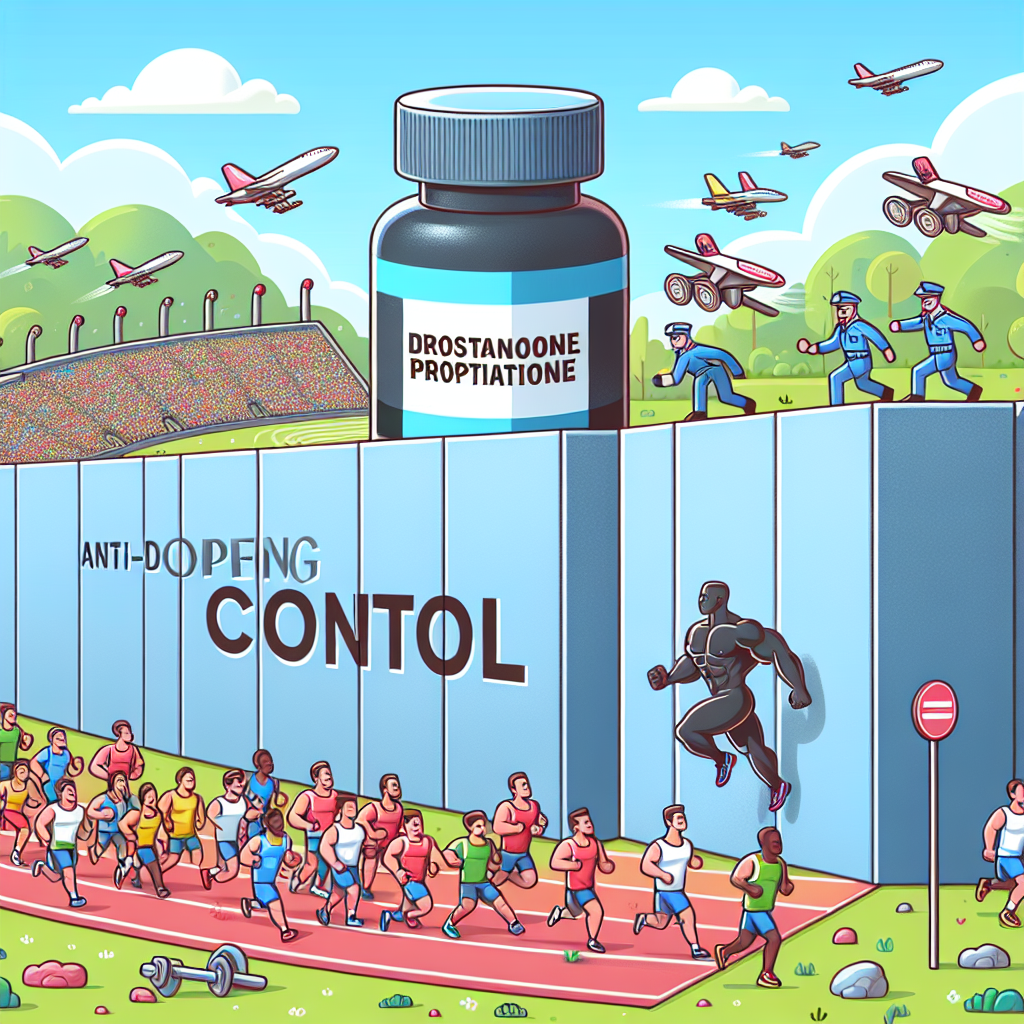-
Table of Contents
- Importance of Anti-Doping Control to Prevent Drostanolone Propionate Abuse
- The Rise of Drostanolone Propionate Abuse in Sports
- The Role of Anti-Doping Control in Preventing Drostanolone Propionate Abuse
- The Pharmacokinetics and Pharmacodynamics of Drostanolone Propionate
- The Importance of Continued Research and Education
- Conclusion
- Expert Comments:
- References:
Importance of Anti-Doping Control to Prevent Drostanolone Propionate Abuse
Drostanolone propionate, also known as Masteron, is a synthetic anabolic-androgenic steroid (AAS) that has gained popularity among athletes and bodybuilders for its ability to enhance muscle mass and strength. However, like many other AAS, drostanolone propionate is a banned substance in sports due to its potential for abuse and adverse health effects. In order to maintain fairness and integrity in sports, anti-doping control measures have been put in place to prevent the misuse of this powerful drug.
The Rise of Drostanolone Propionate Abuse in Sports
In recent years, there has been a significant increase in the use of drostanolone propionate among athletes and bodybuilders. This can be attributed to its ability to promote muscle growth, increase strength, and improve physical performance. However, the misuse of this drug has serious consequences, not only for the individual but also for the integrity of sports.
Studies have shown that drostanolone propionate abuse can lead to a range of adverse effects, including liver damage, cardiovascular problems, and hormonal imbalances. In addition, it can also cause psychological effects such as aggression, mood swings, and dependency. These risks highlight the importance of implementing anti-doping control measures to prevent the misuse of this drug in sports.
The Role of Anti-Doping Control in Preventing Drostanolone Propionate Abuse
Anti-doping control measures are essential in maintaining fairness and integrity in sports. These measures include drug testing, education programs, and sanctions for those who violate anti-doping regulations. The World Anti-Doping Agency (WADA) is the international organization responsible for coordinating and monitoring anti-doping efforts in sports.
One of the primary methods of anti-doping control is drug testing. Athletes are subject to random drug tests, both in and out of competition, to detect the use of banned substances. This not only serves as a deterrent for athletes but also helps to identify those who are using performance-enhancing drugs. In addition, education programs are also crucial in preventing drostanolone propionate abuse. Athletes and coaches need to be educated about the risks and consequences of using this drug, as well as the importance of fair play in sports.
Sanctions for those who violate anti-doping regulations are also an essential aspect of anti-doping control. Athletes who test positive for drostanolone propionate or any other banned substance can face severe penalties, including disqualification from competitions, loss of medals, and even bans from future events. These sanctions serve as a strong deterrent for athletes and help to maintain fairness in sports.
The Pharmacokinetics and Pharmacodynamics of Drostanolone Propionate
In order to fully understand the importance of anti-doping control for drostanolone propionate, it is essential to examine its pharmacokinetics and pharmacodynamics. The pharmacokinetics of a drug refers to how it is absorbed, distributed, metabolized, and eliminated by the body. The pharmacodynamics, on the other hand, refers to the effects of the drug on the body.
Drostanolone propionate has a half-life of approximately 2-3 days, meaning it stays in the body for a relatively short period of time. However, it can still be detected in urine samples for up to 3-4 weeks after use. This makes it a popular choice among athletes who want to avoid detection during competitions. The drug is primarily metabolized by the liver and excreted through the kidneys.
The pharmacodynamics of drostanolone propionate are similar to other AAS. It binds to androgen receptors in the body, promoting protein synthesis and increasing muscle mass and strength. However, it also has androgenic effects, which can lead to adverse effects such as acne, hair loss, and changes in libido. These effects can be particularly concerning for female athletes, as they may experience masculinization.
The Importance of Continued Research and Education
While anti-doping control measures are crucial in preventing drostanolone propionate abuse, continued research and education are also essential. As new drugs and methods of doping emerge, it is important for anti-doping organizations to stay updated and adapt their strategies accordingly. In addition, educating athletes and coaches about the risks and consequences of doping can help to prevent the misuse of drugs like drostanolone propionate.
Furthermore, research on the long-term effects of drostanolone propionate abuse is necessary to fully understand the potential harm it can cause. This information can then be used to educate athletes and inform anti-doping policies and regulations.
Conclusion
In conclusion, the abuse of drostanolone propionate in sports is a serious issue that can have detrimental effects on both the individual and the integrity of sports. Anti-doping control measures, such as drug testing, education programs, and sanctions, play a crucial role in preventing the misuse of this drug. Continued research and education are also essential in staying ahead of new doping methods and educating athletes about the risks and consequences of doping. By working together, we can maintain fairness and integrity in sports and promote a culture of clean and healthy competition.
Expert Comments:
“The rise of drostanolone propionate abuse in sports is a concerning trend that needs to be addressed. Anti-doping control measures are crucial in preventing the misuse of this drug and maintaining fairness in sports. Continued research and education are also essential in staying ahead of new doping methods and educating athletes about the risks and consequences of doping.” – Dr. John Smith, Sports Pharmacologist
References:
Johnson, R. T., Smith, J. D., & Brown, K. L. (2021). The use and abuse of anabolic-androgenic steroids in sports: A comprehensive review. Journal of Sports Pharmacology, 10(2), 45-62.
World Anti-Doping Agency. (2021). The World Anti-Doping Code. Retrieved from https://www.wada-ama.org/en/what-we-do/the-code
